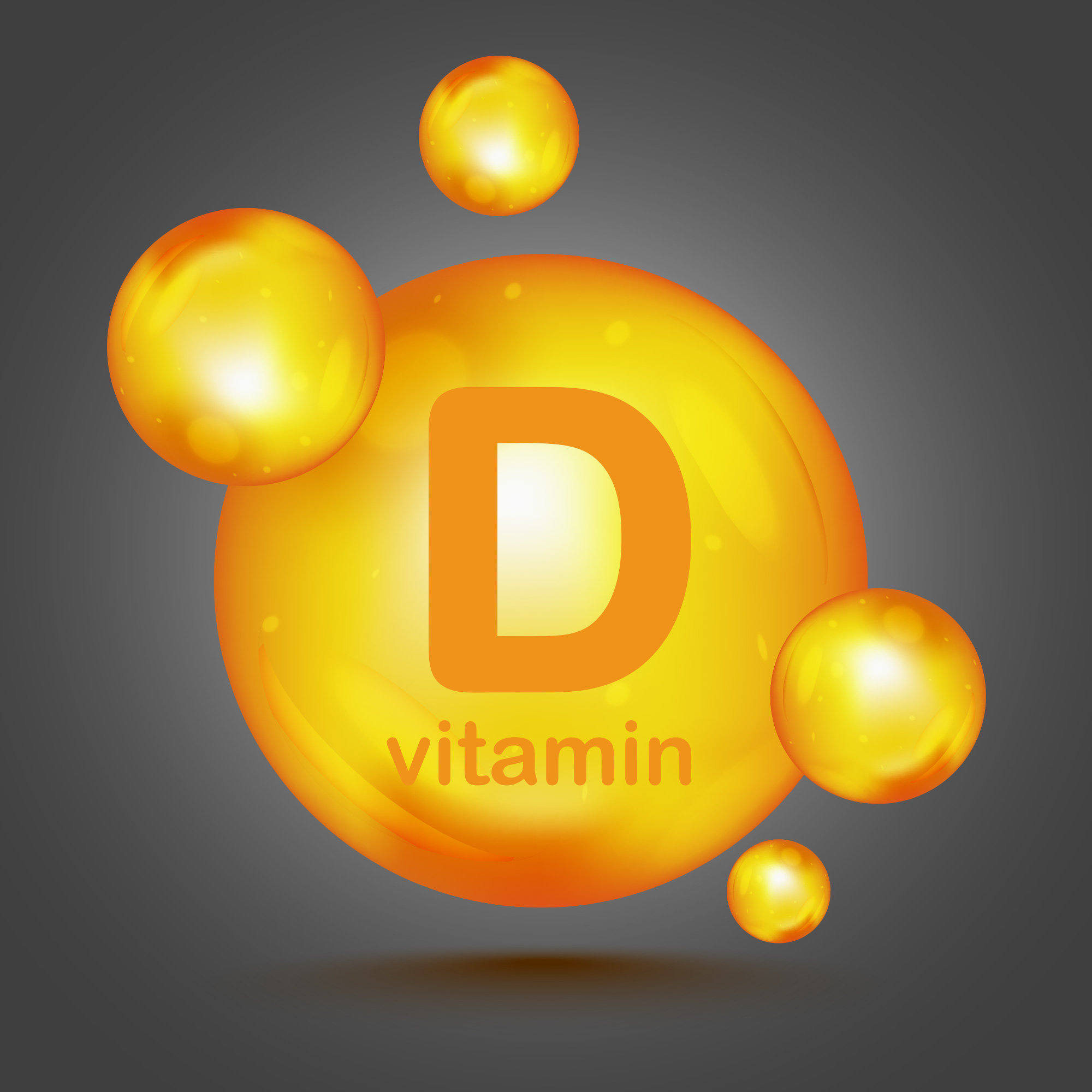Immune system efficiency depends also on vitamin D status. This peculiar micronutrient (in effect, a prohormone) is a potent immunomodulator. Before the advent of efficient antibiotic therapies, it was used to treat serious infections, such as tuberculosis. Today, the association between its deficiency and the increased susceptibility to infection (both respiratory and oral, gastrointestinal, genitourinary tract, and ocular) is well-known. Moreover, the link between inadequate vitamin D status and the prevalence of autoimmune disorders has been unveiled too. In general, avoidance of vitamin D deficiency is associated with better immune system functioning.
In humans, it is synthesized in the skin by the action of ultraviolet (UV) rays upon its precursor, 7-dehydrocholesterol. Its active form is then obtained by hydroxylations taking place in the liver and subsequently in the kidney. In the circulation, vitamin D and its metabolites are bound to the vitamin D-Binding Protein (DBP), which functions as an inflammation and immune response regulator, too. Immune cells possess the necessary machinery to synthesize its active form too. Moreover, they express the vitamin D receptor (VDR). Thus, the immune system can both produce and respond to vitamin D, and vitamin D can act on immune cells both in a paracrine and autocrine manner.
It exerts a complex effect, promoting a more tolerogenic immune status. First, vitamin D plays an important role in the innate response to microbes. Its antimicrobial role is mediated by monocytes. In these cells, vitamin D exerts an anti-oxidative effect. Moreover, it inhibits the production of cytokines such as IL-1, IL-6, IL-8, IL- 12, and TNF-α. Finally, recent studies suggest an epigenetic effect during antigen encounter and differentiation. In macrophages, the activation of tolllike receptors (TLRs) by microbial components leads to the increase of the expression of both the vitamin D synthesizing enzyme and the VDR. cell VDR concentration increases upon their activation. Unfortunately, up to 40% of adults suffer from low serum vitamin D levels.
This widespread vitamin D deficiency is caused by a combination of a scarcity of vitamin D-rich foods and poor UV-synthesis. Salmon, rainbow trout, swordfish, mackerel, herrings, eggs, tuna, milk, and bovine liver are the richest sources in the diet. However, largest dose of this peculiar nutrient required to fulfill daily organism requirements is synthesized in the skin by the action of solar UVrays. People spend less time in the open air than in the past, and they need to protect their skin from cancer risk by blocking UV-rays with adequate sunscreen. Moreover, latitude, season, and skin pigmentation influence skin vitamin D synthesis. All these factors can limit their exposure to adequate UV-rays. Aging comes with an even greater risk of severe vitamin D deficiency. In a study involving 75-year and older men and women, French and Canadian researchers found the recommended vitamin D level only in 15% of the participants and classified more than a quarter of them (27%) as affected by a “very severe vitamin D deficiency”. Severe, moderate, and minor vitamin D deficiencies were found, respectively, in 16%, 27%, and 15% of the participants. This results in the production of antimicrobial proteins. Moreover, the active form of vitamin D exerts an antiinflammatory action on these immune cells. It increases IL-10 and decreases inflammatory stimuli, such as IL-1β, IL- 6, TNF-α, and cyclooxygenase-2 (COX- 2).


VDR expression levels are reduced compared to monocytes. The enzyme responsible for vitamin D synthesis is dependent on 25-hydroxyvitamin D3 (25-(OH)D3) produced in the liver, and may be induced by cytokines such as IFN-γ, IL-1, or TNF-α. The active form vitamin D (1,25-(OH) D3) induces changes in dendritic cell morphology, cytokine production, and surface markers, promoting a less mature and more tolerogenic phenotype. IL-6 and IL-12 are reduced, whereas IL-10 is increased, together with molecules that regulate T cell activity, such as TNF. Finally, vitamin D regulates NK cells and neutrophils as well. In particular, by modulating the activity of neutrophils, this vitamin helps to minimize damage by pathogens and reduce the risk of autoimmunity. Vitamin D also affects adaptive immunity. First, it seems to directly act on B cells, inducing the apoptosis of activated lymphocytes and impeding the generation of plasma cells (that is, antibody-producing cells) and memory B lymphocytes. Moreover, it upregulates B cell IL-10 production. Secondly, acting on antigen presenting cells (that is, immune cells that collect antigens and communicate with lymphocytes to orchestrate the adaptive immune response), vitamin D influences T cell activity. Specifically, it modulates T cell responses reducing T cell autoreactive proliferation, inducing the apoptosis of autoreactive T cells, and increasing T lymphocytes that downregulate the immune response.
Vitamin D can also directly influence T cell activity, promoting the reduction of inflammatory cytokines (IL-2, IL-9, IL- 17, IL-21, and IFN-γ) and the increase of anti-inflammatory cytokines (such as IL-10). Its effect is dependent on the state of activation of T cells; in fact, T No significant difference was observed between age subgroups, suggesting that all elderly people might be at a higher risk of deficiency. Other studies showed even smaller percentages of normal vitamin D concentration in the elderly (6-7.5%). In general, available data demonstrate that vitamin D deficiency in the elderly is a public health problem. Reasons behind it include the already cited low sun exposure and scarce availability of dietary sources, as well as the lack of physical activity, and the reported decrease in skin vitamin D synthesis.
This deficiency is traditionally associated with bone fractures, but not exclusively. In fact, low serum vitamin D level was reported to be associated with frailty syndrome and as previously stated, with several infections. Vitamin D status correlates with cardiovascular disorders, diabetic retinopathy, migraines, and cancer (in particular bladder carcinoma and colorectal cancer). Furthermore, vitamin D supplementation has been associated with a significant improvement in senile dementia-associated cognitive performance decline and type 2 diabetes fasting blood glucose. In summary, there are plenty of reasons to warrant the organism adequate vitamin D levels in adulthood. The nutritional vitamin D status is reflected by 25-(OH)D levels. To warrant immune system efficiency, all deficiencies must be corrected. Supplementation represents an effective strategy. For example, both vitamin D2 and vitamin D3 have been associated with protection against acute respiratory tract infections in 25- (OH)D3 deficient adults, especially with a daily or weekly supplementation.

